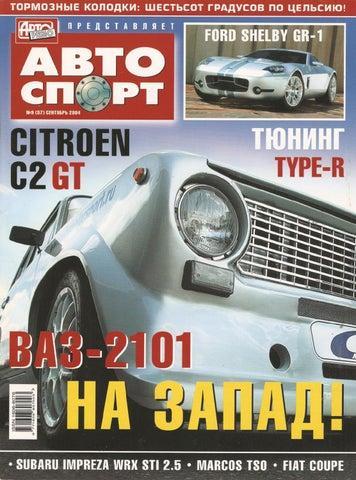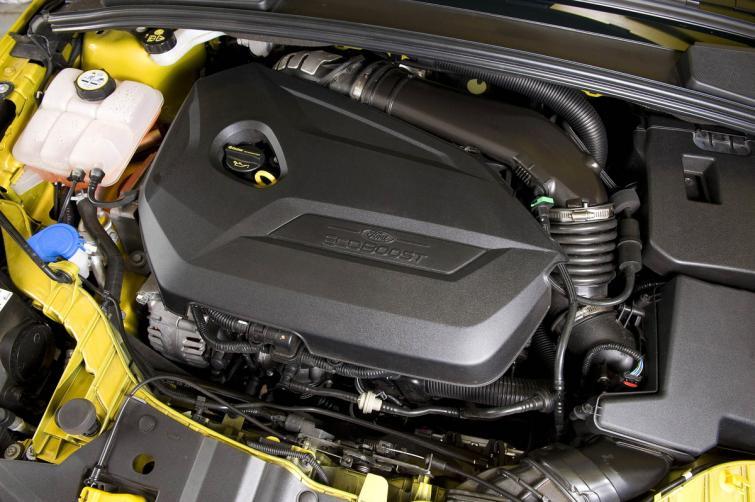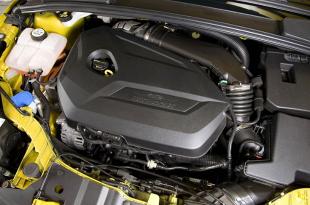
Is downsizing a dead end? Small turbo engines are worse than promised
 The Americans at Consumer Reports looked at how turbocharged gasoline engines compare to traditional naturally aspirated engines. New technologies have lost.
The Americans at Consumer Reports looked at how turbocharged gasoline engines compare to traditional naturally aspirated engines. New technologies have lost.

For several years, the automotive industry has been in a race to improve the performance of small engines, known as downsizing. Corporations are trying to adapt cars to more stringent environmental standards and are replacing large-capacity and powerful units with smaller, but more modern ones. Direct fuel injection, variable valve timing and turbocharging are designed to compensate for power losses caused by smaller cylinder displacement. The Volkswagen Group has a series of TSI engines, General Motors has a series of turbocharged engines, incl. 1.4 Turbo, Ford recently introduced EcoBoost units, including a three-cylinder 1.0 with 100 or 125 hp.
See also: Should you bet on a turbocharged gasoline engine? TSI, T-Jet, EcoBoost
Gasoline turbo engines should offer the performance of larger units, but combustion like small naturally aspirated engines. Everything is correct on paper, but we must remember that the fuel consumption indicated in the technical data is measured in laboratory conditions, and not on the road.
ADVERTISING
The US magazine Consumer Reports tested the performance and fuel consumption of cars with downsizing-era turbocharged engines and older naturally aspirated engines in a road test. In most cases, tradition wins over modernity, and the fuel consumption measured in the laboratory is lower than actually achieved. American tests have shown that cars with smaller turbocharged engines accelerate worse and are not more fuel efficient than cars with larger naturally aspirated engines.
See also: Testing: Ford Focus 1.0 EcoBoost — more than a hundred horses per liter (VIDEO)
Consumer Reports magazine compared, in particular, the performance of the Ford Fusion (called Mondeo in Europe) with the 1.6 EcoBoost engine with 173 hp. with the characteristics of other mid-range sedans. These were the Toyota Camry, Honda Accord, and Nissan Altima, all with naturally aspirated 2.4- and 2.5-liter four-cylinder engines. The turbocharged Fusion 1.6 outperformed them both in sprints from 0 to 60 mph (about 97 km/h) and in terms of fuel consumption. The Ford travels 3,8 miles (25 miles - 1 km) on one gallon of fuel, while the Japanese Camry, Accord and Altima travel 1,6, 2 and 5 miles more respectively.
The Ford Fusion, with a 2.0 hp 231 EcoBoost engine, advertised as a V-22 performance four-cylinder combustion engine, gets 6 mpg. Japanese competitors with V25 engines get 26-XNUMX miles per gallon. They also accelerate better and are more flexible.
Small turbo engines do not deliver | Consumer Reports
These differences decrease with smaller displacement engines. The turbocharged 1.4 Chevrolet Cruze accelerates from 0 to 60 mph better than the 1.8 naturally aspirated car, but is slightly less agile. Both have the same fuel consumption (26 mpg).
See also: Testing: Chevrolet Cruze station wagon 1.4 turbo — fast and roomy (PHOTO)
Experts from Consumer Reports magazine note that the big advantage of turbocharged engines is the high torque available at low engine speeds. This makes it easier to accelerate without downshifting and increases flexibility, but not all downsizing era units do it equally well. Many 1.4 and 1.6 displacement engines still require high revs for effective acceleration. This increases fuel consumption. Most of the turbocharged cars Consumer Report tested were also slower to go from 45 to 65 mph.
In American tests, the BMW's two-liter turbocharged engine performed well. In the X3, it achieved the same results as the V6 block. Consumer Report also tested Audi and Volkswagen with TSI engines, but they didn't drive those models with other petrol engines, so they didn't include them in the comparison. It is worth adding that in Europe the new models of the Volkswagen Group are offered only with turbocharged engines, for example, the new Audi A3, Skoda Octavia III or VW Golf VII.
Full results of ultrasound tests on the website of the magazine "Consumer Reports".